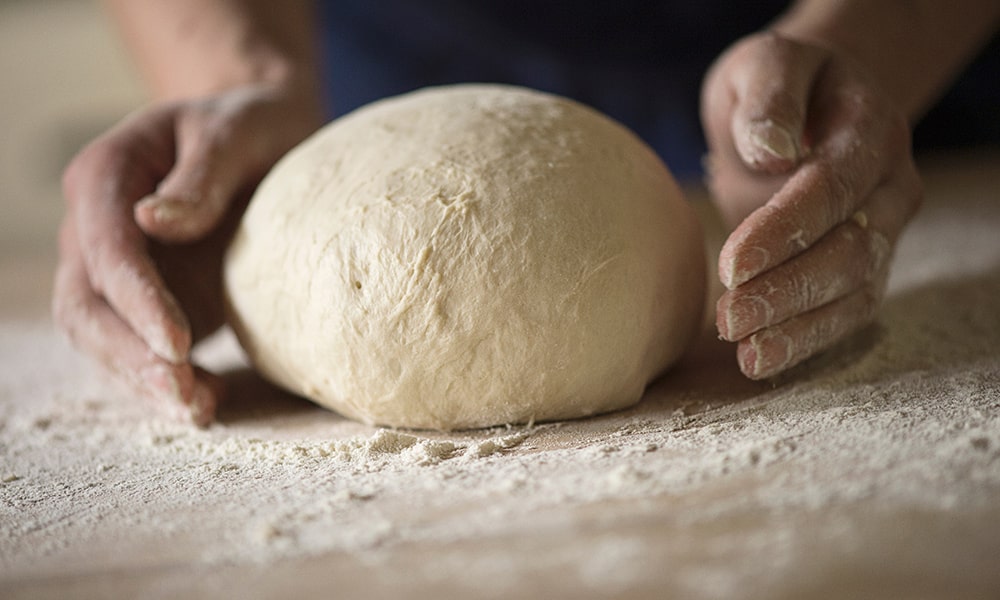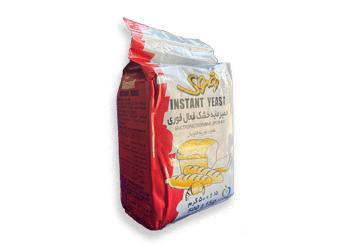
Baker's yeast is the common name for the strains of yeast commonly used in baking bread and other bakery products, serving as a leavening agent which causes the bread to rise (expand and become lighter and softer) by converting the fermentable sugars present in the dough into carbon dioxide and ethanol. Baker's yeast is of the species Saccharomyces cerevisiae, and is the same species (but a different strain) as the kind commonly used in alcoholic fermentation, which is called brewer's yeast or the deactivated form nutritional yeast. Baker's yeast is also a single-cell microorganism found on and around the human body.
It is not known when yeast was first used to bake bread; the earliest definite records come from Ancient Egypt. Researchers speculate that a mixture of flour meal and water was left longer than usual on a warm day and the yeasts that occur in natural contaminants of the flour caused it to ferment before baking. The resulting bread would have been lighter and tastier than the previous hard flatbreads. It is generally assumed that the earliest forms of leavening were likely very similar to modern sourdough; the leavening action of yeast would have been discovered from its action on flatbread doughs and would have been either cultivated separately or transferred from batch to batch by means of previously mixed ("old") dough. Also, the development of leavened bread seems to have developed in close proximity to the development of beer brewing, and barm from the beer fermentation process can also be used in bread making.

Without an understanding of microbiology, early bakers would have had little ability to directly control yeast cultures but still kept locally interesting cultures by reusing doughs and starters to leaven later batches. However, it became possible to isolate and propagate favored yeast strains in the same manner as was done in the beer industry, and it eventually became practical to propagate yeast in a slurry with a composition similar to beer wort, usually including malted barley and wheat flour. Such cultures (sometimes referred to in old American cookery as "emptins", from their origins as the dregs of beer or cider fermentation) became the ancestors of modern baker's yeast, as, in general, they were carefully maintained to avoid what was later discovered to be bacterial contamination, including using preservatives such as hops as well as boiling the growth medium.

- Weight : 500 grams
- quantity in a carton: 20 pieces
- Energy: Pcs Carton 20
- Expiration date: 2year
Description:
Keep the yeast in a dry and cool environment (below 20 degrees Celsius).
After each use, empty the air inside the bag, close the lid tightly and store it in a place away from heat and humidity.
If stored properly, dry yeast can be used for up to one year.
